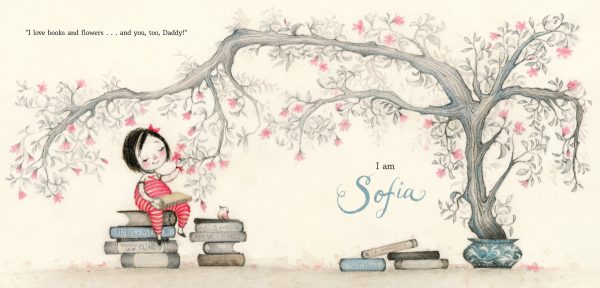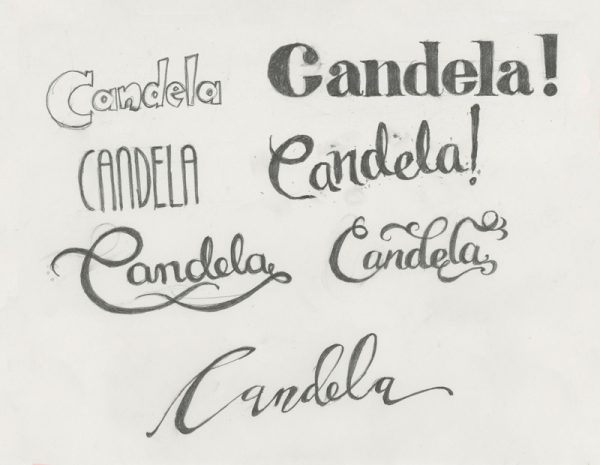What's in a Name? A Conversation With Juana Martinez-Neal

From Juana Martinez-Neal's Alma and How She Got Her Name (Candlewick, 2018). With permission of the publisher.

It’s said there’s a story behind every name and Alma Sofia Esperanza José Pura Candela is surely a moniker worthy of six tales. After complaining that her name is so long that it “never fits,” the girl’s father shares remembrances with her about the people she’s been named after in Alma and How She Got Her Name (Candlewick, Apr.2018; PreS-Gr 2). It’s the first book that Juana Martinez-Neal, the recipient of the 2018 Pura Belpré Award for illustration, has both authored and illustrated, and it’s a title that is sure to inspire children to tell—or ask about—their own stories. A hardcover edition of the book in Spanish will be released simultaneously by Candlewick.
First, congratulations on winning the Pura Belpré Award. What an honor!
Thank you, Daryl! It is a huge honor! It was completely unexpected and a total surprise. So much so that I had to watch the webcast to make sure what or IF I had won. I was embarrassed to have to call the Pura Belpré Committee back just to ask what exactly I had won.
At a recent gathering, you mentioned that you originally planned to be a painter, then illustrator. What led you to children’s book illustration?
I have always been an illustrator. I just didn’t know it then or know the name of what I loved doing. The career of illustration was almost nonexistent in Peru—where I was born and raised. If someone had a way of drawing illustratively, I feel they were pushed to become a cartoonist, which did not interest me. Unfortunately, there was a very narrow view of the profession and what you could do if you had a talent for illustrating. Yet, my work always felt young even when I was painting personal pieces. My heart was and has always been there. Later, when I moved to the United States, and had children of my own, I finally figured out that I could make a living as a children’s book illustrator.
Tell us about the inspiration for Alma.
[Growing up}, …the stories of relatives were part of our lives—regardless if [these individuals] were alive or if they were with us in spirit. Those stories shaped me and were always with me. Making Alma was the most natural transition to bookmaking. In the book, I get to tell the stories I heard growing up and the story of Alma as well. Alma is this very special little girl who has a little bit of every relative who came before her, yet gets room to become whoever she wants to be.
Alma speaks to pride of family, heritage, and individuality, and as such, to every child. I love how your choices for her namesakes—a book lover, an artist, an activist, and a deeply spiritual woman, among others—create a whole, fully engaged individual, albeit a young one.
Yes, we are so many different things at the same time. Even more so children who are discovering who they are while they start to engage with the world and find their place. As parents, we see who our children might become, but need to step back—much like Alma’s father does—and leave room for them to discover their own identity.
The palette in Alma is limited when compared to some of the other books you have illustrated including Susan M. Elya’s La Princesa and the Pea and her La Madre Goose (both Putnam), yet it contributes to the storytelling on so many levels. Can you speak to your artistic choice?
La Madre Goose is a rhyming book for the very young. It was important to use lots of vibrant colors with all of the various characters. In La Princesa and the Pea, I wanted to use the red from the indigenous people from Huilloc (Cusco). I wanted a vibrant, red book. In Alma, I wanted the feel of an old family photo album. Most of those old photos are sepia and black-and-white so it was a deliberate, easy choice. Adding the pink and blue to the work was a way to differentiate between the story that is happening in the present, and the old photos placed in the album.
There are so many creative flourishes in the book. The distinct hand lettering of each of the child’s six names, hints to the country of your birth in the art, and so on. Did these find their way into the book consciously or unconsciously?
I have a fascination for typography and how much is communicated through words and how they are designed. Early on, I knew I would draw each of relative's names in a special handwritten type. I wanted the style of each of the name in Alma to help me tell the story of each relative. You'll see many of my books include handwritten type. Sometimes the text doesn’t find its way into final book. With Alma, I could include hand lettering and lots of details in maps, books, and the mural that Alma painted in her room. Look for these throughout the book!
This is the first book you authored. Will there be another?
I’m happy to say YES! A second book as an author-illustrator will follow, and will also be published by Candlewick! SLJ's starred review of Alma and How She Got Her Name can be found here.
 Listen to Juana Martinez-Neal reveal the story behind Alma and How She Got Her Name, courtesy of TeachingBooks.net.
Listen to Juana Martinez-Neal reveal the story behind Alma and How She Got Her Name, courtesy of TeachingBooks.net. 
Candela! With permission of the publisher
RELATED
The job outlook in 2030: Librarians will be in demand
The job outlook in 2030: Librarians will be in demand
ALREADY A SUBSCRIBER? LOG IN
We are currently offering this content for free. Sign up now to activate your personal profile, where you can save articles for future viewing






Add Comment :-
Be the first reader to comment.
Comment Policy:
Comment should not be empty !!!